Search Thermo Fisher Scientific
Environmental scanning electron microscope
The Thermo Scientific Prisma E Scanning Electron Microscope (SEM) combines a wide array of imaging and analytical modalities with advanced automation to offer the most complete solution of any instrument in its class. It is ideal for industrial research and development, quality control, and failure analysis applications that require high resolution, sample flexibility and an easy-to-use operator interface. The Prisma E SEM succeeds the highly successful Thermo Scientific Quanta SEM.
ESEM with EDS
The unique combination of accessible all-round performance, a large set of accessories, and the most intuitive elemental analysis with Thermo Scientific ColorSEM make the Prisma E SEM the go-to SEM for micro-scale imaging and analysis in any industry or field.
Elemental information at your fingertips
Live composition-based image coloring for intuitive elemental analysis with optional ChemiSEM Technology and integrated energy-dispersive X-ray spectroscopy (EDS). Speed up your work and obtain the most complete sample information with always-on analysis.
Excellent image quality
Excellent image quality at low kV and low vacuum thanks to flexible vacuum modes, including through-the-lens differential pumping. Simultaneous secondary electron (SE) and backscattered electron (BSE) imaging in every mode of operation.
Minimize sample preparation time
Low vacuum and ESEM capability enable charge-free imaging and analysis of nonconductive and/or hydrated specimens.
In-situ study of materials in their natural state
With the Prisma E SEM's environmental SEM (ESEM) mode, samples can be imaged even if they are hot, dirty, outgassing or wet.
Excellent analytical capabilities
Excellent analytical capabilities with a chamber that allows 3 simultaneous EDS detectors, EDS ports that are 180° opposite, wavelength-dispersive spectroscopy (WDS), coplanar EDS/EBSD and high-quality charge-free EDS and EBSD in low vacuum.
Easy to use
Easy to use, intuitive software with user guidance and undo functionality makes highly effective operation possible for novice users, while enabling experts to do their work faster and with fewer mouse clicks.
Resolution |
|
Standard detectors |
|
Optional detectors |
|
ChemiSEM Technology (optional) |
|
Stage bias (beam deceleration, optional) |
|
Low vacuum mode |
|
Stage |
|
Standard sample holder |
|
Chamber |
|
In situ accessories (optional) |
|
Software options |
|
Webinar: Scanning electron microscopy: selecting the right technology for your needs
This on-demand webinar has been designed to help you decide which SEM best meets your unique needs. We present an overview of Thermo Fisher Scientific SEM technology for multi-user research labs and focus on how these wide-ranging solutions deliver performance, versatility, in situ dynamics and faster time to results. Watch this webinar if you are interested in:
- How the needs for different microanalysis modalities are met (EDX, EBSD, WDS, CL, etc.).
- How samples are characterized in their natural state without the need for sample preparation.
- How new advanced automation allows researchers to save time and increase productivity.
Goldrush. This mixture of particles contains gold (large area on the left), copper (smallest particles) and a Al/Si/Mg alloy (the bigger particles). The mixture is heated to higher and higher temperatures. At a certain point, gold starts diffusing across the metal surfaces, thereby completely changing their appearance. The experiment is performed using the High Vacuum Heating Stage mounted on a Prisma E SEM.
Webinar: Scanning electron microscopy: selecting the right technology for your needs
This on-demand webinar has been designed to help you decide which SEM best meets your unique needs. We present an overview of Thermo Fisher Scientific SEM technology for multi-user research labs and focus on how these wide-ranging solutions deliver performance, versatility, in situ dynamics and faster time to results. Watch this webinar if you are interested in:
- How the needs for different microanalysis modalities are met (EDX, EBSD, WDS, CL, etc.).
- How samples are characterized in their natural state without the need for sample preparation.
- How new advanced automation allows researchers to save time and increase productivity.
Goldrush. This mixture of particles contains gold (large area on the left), copper (smallest particles) and a Al/Si/Mg alloy (the bigger particles). The mixture is heated to higher and higher temperatures. At a certain point, gold starts diffusing across the metal surfaces, thereby completely changing their appearance. The experiment is performed using the High Vacuum Heating Stage mounted on a Prisma E SEM.
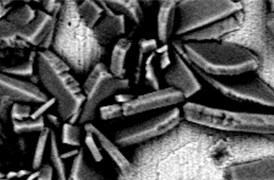
Process control using electron microscopy
Modern industry demands high throughput with superior quality, a balance that is maintained through robust process control. SEM and TEM tools with dedicated automation software provide rapid, multi-scale information for process monitoring and improvement.
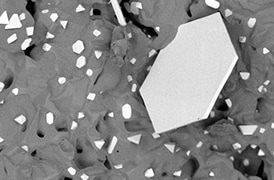
Quality control and failure analysis
Quality control and assurance are essential in modern industry. We offer a range of EM and spectroscopy tools for multi-scale and multi-modal analysis of defects, allowing you to make reliable and informed decisions for process control and improvement.
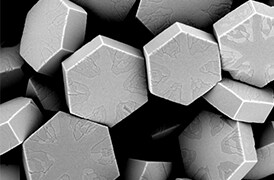
Fundamental Materials Research
Novel materials are investigated at increasingly smaller scales for maximum control of their physical and chemical properties. Electron microscopy provides researchers with key insight into a wide variety of material characteristics at the micro- to nano-scale.
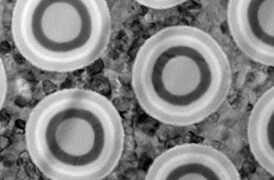
Semiconductor Pathfinding and Research
Advanced electron microscopy, focused ion beam, and associated analytical techniques for identifying viable solutions and design methods for the fabrication of high-performance semiconductor devices.
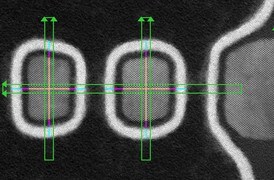
Yield Ramp and Metrology
We offer advanced analytical capabilities for defect analysis, metrology, and process control, designed to help increase productivity and improve yield across a range of semiconductor applications and devices.
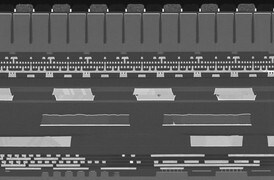
Semiconductor Failure Analysis
Increasingly complex semiconductor device structures result in more places for failure-inducing defects to hide. Our next-generation workflows help you localize and characterize subtle electrical issues that affect yield, performance, and reliability.

Physical and Chemical Characterization
Ongoing consumer demand drives the creation of smaller, faster, and cheaper electronic devices. Their production relies on high-productivity instruments and workflows that image, analyze, and characterize a broad range of semiconductor and display devices.

EDS Analysis with ChemiSEM Technology
Energy dispersive X-ray spectroscopy for materials characterization.

Imaging Hot Samples
Studying materials in real-world conditions often involves working at high temperatures. The behavior of materials as they recrystallize, melt, deform, or react in the presence of heat can be studied in situ with scanning electron microscopy or DualBeam tools.
_Technique_800x375_144DPI.jpg)
Environmental SEM (ESEM)
Environmental SEM allows materials to be imaged in their native state. This is ideally suited for academic and industrial researchers who need to test and analyze samples that are wet, dirty, reactive, outgassing or otherwise not vacuum compatible.

Particle analysis
Particle analysis plays a vital role in nanomaterials research and quality control. The nanometer-scale resolution and superior imaging of electron microscopy can be combined with specialized software for rapid characterization of powders and particles.

Cathodoluminescence
Cathodoluminescence (CL) describes the emission of light from a material when it is excited by an electron beam. This signal, captured by a specialized CL detector, carries information on the sample’s composition, crystal defects, or photonic properties.
Semiconductor Analysis and Imaging
Thermo Fisher Scientific offers scanning electron microscopes for every function of a semiconductor lab, from general imaging tasks to advanced failure analysis techniques requiring precise voltage-contrast measurements.

EDS Analysis with ChemiSEM Technology
Energy dispersive X-ray spectroscopy for materials characterization.

Imaging Hot Samples
Studying materials in real-world conditions often involves working at high temperatures. The behavior of materials as they recrystallize, melt, deform, or react in the presence of heat can be studied in situ with scanning electron microscopy or DualBeam tools.
_Technique_800x375_144DPI.jpg)
Environmental SEM (ESEM)
Environmental SEM allows materials to be imaged in their native state. This is ideally suited for academic and industrial researchers who need to test and analyze samples that are wet, dirty, reactive, outgassing or otherwise not vacuum compatible.

Particle analysis
Particle analysis plays a vital role in nanomaterials research and quality control. The nanometer-scale resolution and superior imaging of electron microscopy can be combined with specialized software for rapid characterization of powders and particles.

Cathodoluminescence
Cathodoluminescence (CL) describes the emission of light from a material when it is excited by an electron beam. This signal, captured by a specialized CL detector, carries information on the sample’s composition, crystal defects, or photonic properties.
Semiconductor Analysis and Imaging
Thermo Fisher Scientific offers scanning electron microscopes for every function of a semiconductor lab, from general imaging tasks to advanced failure analysis techniques requiring precise voltage-contrast measurements.
Electron microscopy services
To ensure optimal system performance, we provide you access to a world-class network of field service experts, technical support, and certified spare parts.












